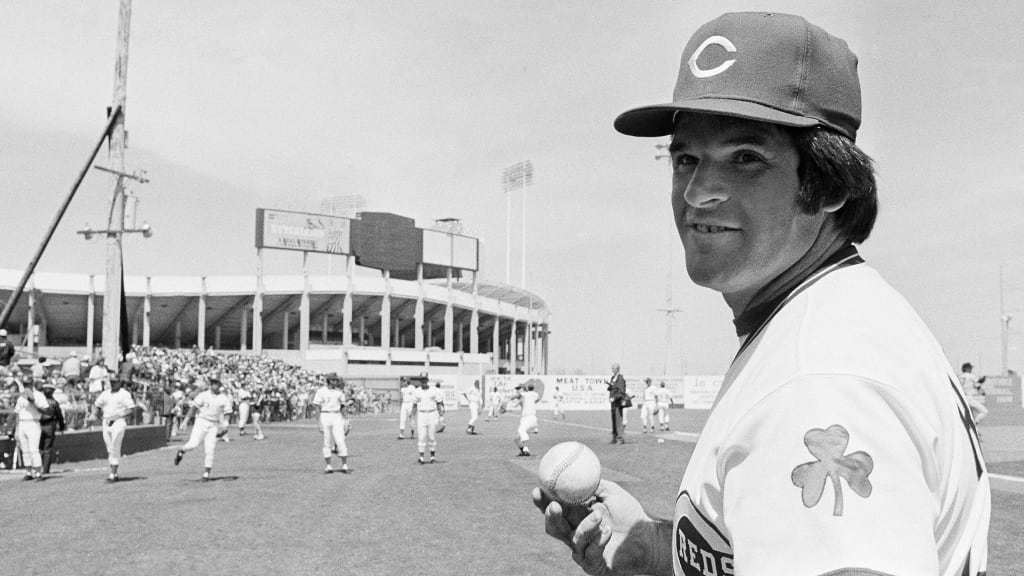
Throughout Florida and Arizona, baseball goes green today, and it has nothing to do with recycling or carbon footprints. Green caps, green bases, maybe an occasional green bat donut -- and sure and begorrah to all.
But long before St. Patrick's Day became sort of the unofficial holiday of Spring Training, even long before the Majors had their own snakes to cope with -- the Diamondbacks, of course -- there was only a former Ice Capades honcho with an eye for hoopla.
Back in 1978, March 17 around Spring Training camps was known simply as ... Friday.
Maybe Cincinnati Reds general manager Dick Wagner was bored after tooling the Big Red Machine into back-to-back World Series winners in 1975 and 1976. Maybe he grew nostalgic for the days when his gimmicks popularized the Ice Capades. Or maybe he just liked pulling a fast one.
Whatever it was, months before the Reds departed for their Spring Training camp in Tampa, Wagner had this brilliant thought. Most people struck by ingenuity would be eager to call others and share their idea, but Wagner went the other way: He kept it to himself.
The sole exception was Koch's Sporting Goods, the Reds' longtime outfitter. Wagner had the team's equipment manager, Bernie Stowe, order a roster's worth of green uniforms, with specific instructions of where and when to deliver them, under a veil of airtight secrecy.
"This was not a situation where there was a lot of discussion in our offices during the winter," recalled Jim Ferguson, at the time the Reds' public relations director and one of the first recipients of MLB's Bob Fishel Award for PR excellence. "It was a tightly held secret, perhaps with Wagner alone, plus Stowe, who had to make all the arrangements. It was not out of character for Wagner to have made this a one-man production."
"Wagner was this stern German, but he was always thinking out of the box," said Dennis Tuttle, a Maryland-based sports historian. "A real Jekyll-and-Hyde guy who was always coming up with these cockamamie ideas.
"And this was a real stealth operation. No one is quite sure how they managed to do that."
The fact that the information superhighway had not yet been paved helped. Cincinnati fans and media were far more intrigued by how Tom Seaver's first full season in a Reds uniform would affect their chances of retrieving the title they lost in 1977 than by what kind of uniform Koch's was packing in those Tampa-bound boxes.
Spring Training progressed routinely for weeks, manager Sparky Anderson optimistically steering the Big Red Machine through drills and the first half of the Grapefruit League schedule.
On March 17, Al Lopez Field crackled with electricity: The Reds were hosting the team that the previous season had inherited their World Series laurels, the Yankees.
The Reds went through the typical pregame rituals -- batting practice, infield -- in their regular uniforms. Show business as usual. But while the players were on the field, gremlins -- or were they leprechauns? -- were busy in the clubhouse.
After workouts, the Reds dragged their perspiring bodies off the field and retreated to the clubhouse -- closed, uncharacteristically, to the media -- took a look and then did a double-take at their lockers ... green uniforms hanging in front of each.
"Did we get traded to Oakland?" catcher Johnny Bench asked.
Shortstop Davey Concepcion squinted at his green No. 13 uniform and said, "I'm not wearing that. I'm Venezuelan, not Irish."
But they all giddily changed into the head-to-toe green.
"Everywhere that was usually red had been changed to green -- the team name, the logo, the player's name on the back, socks, all the trimmings," Tuttle said. "The hats were solid green with a white 'C.'
"Everyone stayed out of sight until game time ..."
... When, lined up single file with Anderson in the lead, the Reds -- er, Greens -- marched out of the clubhouse and onto the field.
"It was a total surprise," recalled Hal McCoy, the Hall of Fame-recognized baseball writer who, in retirement from the Dayton Daily News, still covers the Reds through his blog on the newspaper's Web site. "And it created quite a shock."
Hordes from both the Cincinnati and Tampa media were on hand, having been alerted that they wouldn't want to miss something special, without having a clue of the mysterious goings-on. And when the secret was revealed, reporters and photographers had a field day, starting a news-flash brushfire that continued raging the next day, with national network television coverage.
Bob Hertzel, the Cincinnati Enquirer's cheeky baseball writer, got in the spirit in his coverage of the Reds' 9-2 victory over the Yankees by Irish-izing all the players' names in his game story. Pete O'Rose, Johnny O'Bench, George O'Foster and Joe O'Morgan were all Cincinnati Reds for a day.
For all the attention paid to Wagner's prank, the rest of baseball did not immediately follow suit. The Dodgers began wearing green caps and running green bases in Vero Beach in the early '80s, and the Phillies, Mets and Astros had also gone green before the end of that decade.
From that point on, the tradition quickly spread. Today, three years after Wagner's death, his impulsive idea will be celebrated by players, on diamonds and at concessions stands from Hi Corbett Field to Space Coast Stadium.
So the least we can do is raise a toast in Wagner's memory:
May the lilt of Irish laughter
lighten every load.
May the mist of Irish magic
shorten every road...
And may all your friends remember
all the favours you are owed!